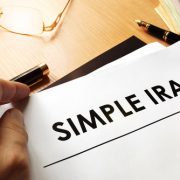What Does Paperwork Look Like Within a Self-Directed IRA?
Paperwork. Unless you have a slightly odd passion for it, it is likely not your favorite phrase in the world. And yet for many of us, paperwork is essential. It stores our more important information, it executes our most important contracts, and it finalizes our most important investments. The good news is that if you invest through a Self-Directed IRA, the amount of paperwork you do does not have to feel backbreaking. In fact, a Self-Directed IRA administration firm can help you with much of it.
And if you still think it is a slightly spooky subject—possibly throwing you off from using a Self-Directed IRA altogether—let us take a closer look at what the paperwork within an IRA actually is. We even include some samples of forms for you to look at to demystify the entire process.
What Kinds of Paperwork Should You Expect?
Let us start by looking at the type of paperwork that you should expect. If you have nightmares about sitting down and doing an accounting firm’s worth of forms and tax receipts, there’s good news. Some of this paperwork is simple, and much of it is something you only have to fill out once.
One example of that is when you use paperwork to set up an IRA, or arrange one-time funding, such as a transfer. In this kind of paperwork, it is simple: you are just filling out some essential details for a one-time event. That form, for example, is only one page.
There are other forms, such as rollover forms and deposit slips for contributions, that are also relatively straightforward and intuitive. The bottom line? Not all paperwork has to be scary.
Of course, there is also the paperwork you might use within the Self-Directed IRA, such as:
- Earnest money requests.
- Real estate investment letters.
- Private equity investment letters, such as stocks and LLC/limited partnerships.
- Promissory note investment letters.
Once again, these forms might not be as complicated as you think. For example, consider the promissory note. This is one-way investors with a Self-Directed IRA can keep money separate from the stock market within an IRA. By making well-placed investments in promissory notes—essentially lending—an investor can find above-market returns when wisely choosing investments. And the form itself is so simple it only requires three pages of work.
What About Working with a Self-Directed IRA Administration Firm?
When you work with a Self-Directed IRA administration firm, they serve as a custodian on your account. What they do not do is advise you with specific investments or tell how you how to spend your money. It is, after all, a Self-Directed IRA. That comes with a lot of responsibility. But as the custodian on the account, a Self-Directed IRA administration firm can help with the preparation of adequate paperwork to help you with each transaction you have chosen to execute. They can also help ensure that your paperwork meets the standards of the IRS, so that every investment you make will be considered a valid retirement investment.
This is important, because when you self-direct, you also potentially run into the rules of the IRS when it comes to what is and what is not a retirement asset. With traditional setups, investors often choose from predetermined mutual funds, and this is not an issue. With self-directing, there is a lot more freedom for you to choose what you keep in your retirement portfolio. And keeping up with your paperwork is one way you meet the responsibility of all that freedom.
Interested in learning more about Self-Directed IRAs? Contact American IRA, LLC at 866-7500-IRA (472) for a free consultation. Download our free guides or visit us online at www.AmericanIRA.com.








